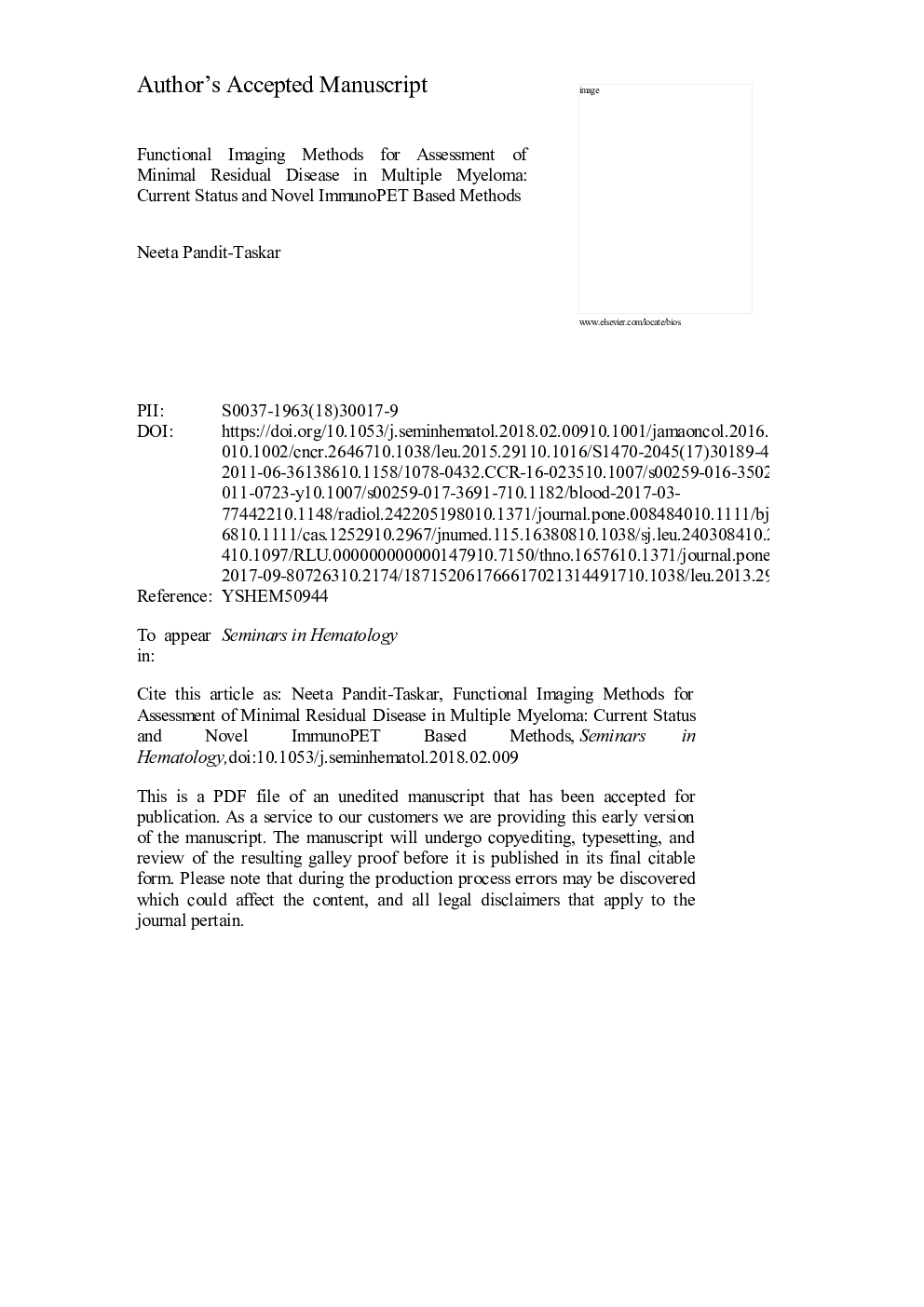| Article ID | Journal | Published Year | Pages | File Type |
|---|---|---|---|---|
| 8734808 | Seminars in Hematology | 2018 | 27 Pages |
Abstract
Imaging plays a key role in assessment of myeloma. Osteolytic bone lesions are optimally assessed using structural imaging, however the structural changes lag the functional changes in the disease. Functional imaging with fluoro deoxy glucose (FDG) positron emission tomography (PET) computerized tomography (CT) is useful in assessment of high-risk myeloma. FDG PET provides prognostic information and is helpful in monitoring response to therapy. However, it is nonspecific and may not be optimal in assessing treatment response to immunotherapeutic agents. Imaging with targeted agents may allow for better assessment of changes from therapy, that is based on the specific targeted mechanism. ImmunoPET imaging is a novel method to assess targeting of specific antigen by therapeutic antibodies. This review summarizes the role of functional imaging and development of novel immunoPET agents for assessment of treatment response and residual disease.
Keywords
Related Topics
Health Sciences
Medicine and Dentistry
Hematology
Authors
Neeta MD,
